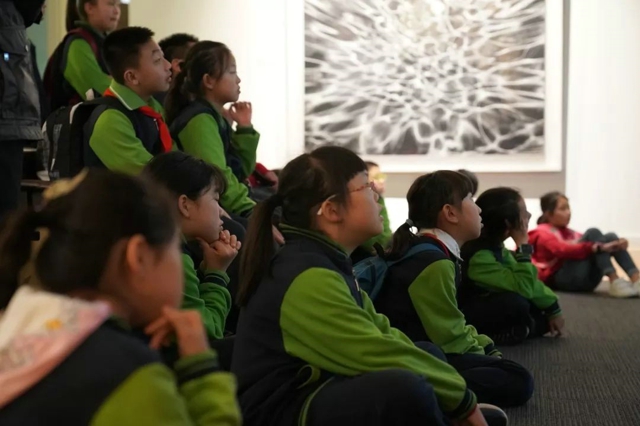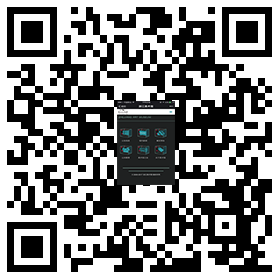A Date with Hong Kong — “West Lake Panorama•Millennium Woodblock Printing” Exhibition Is Opened at the University Museum and Art Gallery of the University of Hong Kong
pubdate: 2018/12/8 author: zjam source: zjam click:
On the evening of December 6, the University Museum and Art Gallery of the University of Hong Kong (UMAG) on the south bank of Victoria Harbour was lit brightly with flowing lights and shadow. The exhibition named “West Lake Panorama·Millennium Woodblock Printing” co-sponsored by ZJAM and the UMAG was opened at the Tsui Tsin-tong Building of the UMAG.
.jpg)
A photo of ZJAM staff and guests
This exhibition was one of the key projects for cultural exchanges between the Mainland and Hong Kong/Macao initiated by the Ministry of Culture and Tourism in 2018. More than 100 officials and distinguished guests attended the opening ceremony, including Ying Jinfei, executive deputy curator of ZJAM; W. John Kao, vice chancellor of the University of Hong Kong; Christopher J Mattison, curator of the UMAG; Deputy Chief Librarian Feng Pingshan and Chief Librarian Hu Meihua of the University of Hong Kong. The opening ceremony was hosted by Florian Knothe, artistic director of the UMAG.
In his speech, Ying Jinfei, curator of this event and executive deputy director of ZJAM, first expressed his gratitude to the UMAG for its joint curatorial efforts. He then introduced ZJAM briefly and finally explained the idea of this exhibition. He said that this exhibition named “West Lake Panorama·Millennium Woodblock Printing” in Hong Kong featured more than selected 25 pieces/groups of works collected by ZJAM. The exhibition was intended to “Revitalize Tradition and Innovate Heritage”. By transforming the core thinking of “water” and refining “printing/rubbing” as a symbolic technique, this exhibition took the West Lake in Hangzhou as the starting image to retrospect the watermark origin in the Chinese cultural history, extend the performance possibilities of watermark art, and activate the watermark gene of contemporary life. As far as resources are concerned, there are both historical literature and contemporary creations. Some breakthrough attempts have been made in the language and content of the exhibition. The purpose is to integrate novel display means with landscape, history, culture and traditional techniques to observe the historical changes of the West Lake from ancient to present and to more vividly condense the poetic qualities of the West Lake. At the same time, with new creative ideas, innovation is made to the form and content of watermark art works on the basis of traditional prints, reflecting the rich artistic connotation of watermark prints from the perspectives of traditional techniques and cultural innovations. While the essence of ancient traditional crafts is inherited, the inexhaustible vitality of Chinese watermark prints is reinterpreted from the perspective of modern aesthetics.
W. John Kao, vice chancellor of the University of Hong Kong, mentioned in his speech that he has a very close relationship with Hangzhou and visits this city every year because his wife is from Hangzhou. Hangzhou has a long history and is a land of outstanding people. This city is picturesque, cultural, vigorous, and open. Hong Kong is a world-famous modern metropolis. Hong Kong and Hangzhou have long-reaching ties, complementary advantages, and close cooperation. He hoped that the two sides would further expand the fields and space in cultural exchanges, try to write a new chapter in exchanges and cooperation between Hong Kong and Hangzhou, and work together to create a bright future for both.
Florian Knothe, artistic director of the UMAG, said that the UMAG and ZJAM had made active preparations and worked closely to create a series of exhibitions with rich content and diverse forms since last December. He expected to pool cultural resources, create brand effects, build high-quality projects, and strongly promote targeted excellent Chinese traditional culture by virtue of ZJAM to Hong Kong audiences so that they could get close to each other and perceive the charm of gorgeous watermark prints from ancient to modern. He also looked forward to closer cooperation and exchanges after this exhibition.
At the end of the opening ceremony, Deputy Curator Jin Jinfei donated the collection of Watermark Millennium: Great Exhibition of Watermark Printmaking in China to the UMAG and the Library of the University of Hong Kong.
Before the opening ceremony, Deputy Curator Ying Jinfei had an exclusive interview with a reporter of Hong Kong Commercial Daily and acted as a guide for the media around the exhibition. He said that the creators of the whole exhibition could be divided into four groups: the first group was the literature originating to the Ming and Qing Dynasties; the second group was the traditional watermark prints around the theme of West Lake created in the 1970s and 1980s; the third group was the creations of young and middle-aged print makers; the fourth group was the creations of younger print makers.
He also talked about two highlights of the exhibition. Firstly, the exhibition took on the form of “album”: the section named “Mist-covered Waters” featured newly created watermark works about the West Lake that were threaded in a traditional album form, and the album was backed by a support to highlight the visual beauty of “water ripples”, a fit to the image of the West Lake. This became a visual center in the exhibition hall;
Secondly, the collective creation of the New West Lake Panorama was a giant jigsaw product that activated historical documents with contemporary concepts and created cultural interpretation possibilities from multiple dimensions such as time, space and character.
As parts of the exhibition, a public lecture on the theme of “West Lake Panorama·World of Rubbings and Prints” was held in the museum on December 7, and rubbing demonstrations brought by the staff of ZJAM were set up to vividly display Chinese watermarking techniques. The event attracted more than 100 visitors to make appointments and participate. Many Hong Kong visitors saw live woodblock watermark for the first time and gathered around the demonstrations, amazed and reluctant to leave. The unique live rubbing demonstrations were warmly received by the guests and allowed people to feel the charm of watermark prints while enjoying the visual feast. After the lecture and demonstrations were finished, the visitors lingered around and visited the exhibition in the hall. Alexandra, a graduate student at the University of Hong Kong, told us that she has always liked Chinese watermark prints since she was a child. She was exposed to this art during her internship at the museum. She felt fortunate to be able to witness such beautiful Chinese watermark prints and experience the making of those art works at the UMAG that day. She could feel the beauty of ancient and modern art and was deeply shocked.
Since the launch of the key projects for exchanges between the Mainland and Hong Kong/Macao by the Ministry of Culture and Tourism in 2013, the cultural exchanges between the Mainland and Hong Kong have been increasingly close, rich and healthy. An all-round, wide-coverage, and multi-channel communication pattern has taken shape. This development greatly promotes the spread and inheritance of Chinese traditional culture in Hong Kong and plays a positive role in enhancing Hong Kong compatriots’ recognition of the country, the nation and the Chinese culture.
This series of theme activities including watermark prints display, rubbing demonstrations and “West Lake Panorama·World of Rubbings and Prints” vividly showed the spirit of the times testified in the inheritance and artistic innovation of Chinese watermark printmaking and built a platform for this art to go global. They also helped the local art community to better understand the Chinese culture and its innovative development achievements and promoted cultural exchanges and cooperation between the Mainland and Hong Kong.
.jpg)
.jpg)

.jpg)
.jpg)

 Tel: 0571-87078700 | Site Service:0571-87078700
Tel: 0571-87078700 | Site Service:0571-87078700 Address: NO.138 Nanshan Road Hangzhou Zhejiang
Address: NO.138 Nanshan Road Hangzhou Zhejiang Opening: Tuesday to Sunday 9:00am-5:00pm, Closed Mondays
Opening: Tuesday to Sunday 9:00am-5:00pm, Closed Mondays


.jpg)
.jpg)
.jpg)

.jpg)
.jpg)




